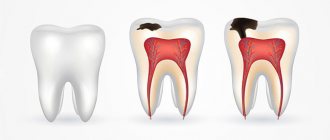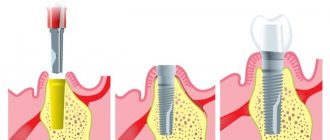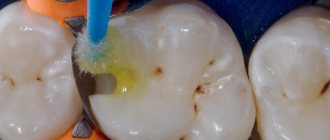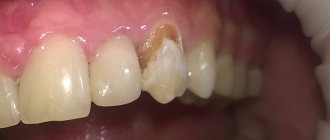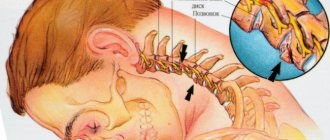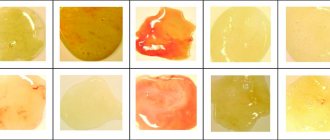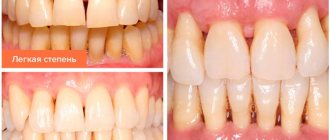Periodontitis is an inflammatory disease that affects periodontal tissue. In dentistry, there is another disease with a similar name - periodontal disease. It is characterized by the same changes, but they develop without an accompanying inflammatory process.
Periodontal tissues include gums, blood vessels, ligaments and bones. All these structures securely fix the teeth and ensure their normal nutrition. With the development of the inflammatory process, these functions are disrupted, which leads to the appearance of specific symptoms. The main danger of periodontitis, like periodontal disease, is the development of tooth mobility with subsequent loss. Therefore, both diseases require early diagnosis and effective treatment.
Generalized periodontitis: symptoms and treatment
Periodontitis is a very common pathology of periodontal tissues (soft tissue structures around the dental unit). If the pathological process is started and left without treatment, then you can lose all the dental units.
Periodontal pockets are the best location for the emergence and development of an infectious process, which does not have the best effect on the healthy state of the body. A beautiful and healthy smile gives you self-confidence and makes you feel natural. When periodontal tissue is damaged, the gums become red and swollen. The disease affects the overall health of the body and the well-being of a person. If something bothers you in the oral cavity, you should immediately consult a specialist. Dentist therapists at the branches of the West Dental family clinic in Yanino-1 and Vsevolozhsk will help with identifying the origins of anxiety and their treatment.
It has been scientifically determined that the occurrence of periodontitis is influenced by: soft plaque and hard deposits; filling material or orthopedic structure fixed in violation of treatment protocols.
Diagnosis of periodontitis
Diagnosis begins with a consultation with a general dentist or periodontist. The doctor examines the oral cavity and prescribes additional examination, which may include the following methods:
- X-rays of the jaws. This basic examination provides general information about the condition of the teeth and bone tissue.
- Rheoparodontography. This method is used to determine the condition of the vessels of periodontal tissues.
- Ultrasonic osteometry. The study shows bone density.
- Schiller-Pisarev test. It involves staining the mucous membrane with a special solution that reveals foci of inflammation.
- Microbiological culture from the oral cavity. Allows you to determine the composition of microorganisms and their sensitivity to antibacterial drugs.
- Determination of periodontal index and bleeding index.
A comprehensive examination allows you to determine the degree of periodontitis, identify concomitant diseases and complications, and based on this information, plan further treatment.
Classification
According to the number of units affected by pathology:
- Catarrhal (localized) – 1-3 units in the affected area;
- Generalized – the entire dentition is affected.
According to the severity of generalized periodontitis (ICD code K05):
- Generalized mild periodontitis (ICD 10 code K05.3). This clinical diagnosis is made when the depth of the pockets in the gingival tissue is less than 3.5 mm, and less than 1/3 of the root is resorbed.
- Average. The subgingival depressions are 3.5-5 mm, and the bone is sclerosed at 50% of the root length.
- Severe degree. This stage is indicated by the depth of periodontal changes greater than 5 mm and resorption of more than 1/2 of the root.
Differential diagnosis according to pathogenesis:
- acute - more than one annual exacerbation;
- chronic generalized periodontitis (according to ICD K05) is an ongoing pathological process;
- exacerbation of chronic periodontitis – pain, discomfort, activation of the inflammatory process.
Classification and types of periodontitis
Depending on the characteristics of the course, the extent of the lesion and the severity, several forms of the disease are distinguished.
Acute and chronic periodontitis
The acute course of the disease is characterized by the sudden onset of severe symptoms that cause severe anxiety. Therefore, acute forms of periodontitis are considered relatively favorable, since patients seek medical help more often.
Chronic periodontitis, on the contrary, is prone to a long asymptomatic course. The symptoms are mild and patients may not pay attention to them. During periods of exacerbation, the clinical picture becomes more clear, but not all people make an appointment with a dentist. At the same time, the disease continues to progress, so sooner or later such patients will still need medical care.
Localized and generalized periodontitis
The extent of periodontal tissue damage may vary. If the inflammatory process spreads in one area of the jaw, then they speak of localized periodontitis. As a rule, in such cases one or more teeth that are located nearby are affected. Even with a long course, the localized inflammatory process, as a rule, does not spread to neighboring teeth.
With generalized periodontitis, all periodontal tissues (or most of them) on the upper or lower jaw are affected. This form is quite dangerous, since without proper treatment it can lead to the loss of most of the teeth. However, even if the patient seeks medical help in a timely manner, the problem cannot be solved quickly. Treatment of gum periodontitis in the generalized form is usually long-term and complex.
Degrees of periodontitis
Based on the severity of the disease, periodontitis is divided into 3 degrees or stages.
In mild cases, the general condition of the body remains unchanged. Local manifestations include periodontal pockets up to 3.5 mm deep, inflammation, redness and swelling of the gums. Pathological mobility of teeth is not detected.
Moderate periodontitis is characterized by an increase in the depth of periodontal pockets up to 5 mm, a decrease in the height of interdental septa, and the appearance of pathological mobility of teeth. At this stage, the patient may experience exposure of the neck of the tooth, gaps between the teeth, traumatic occlusion, and tooth displacement. The general state of health also changes. Patients may complain of weakness, fatigue, and poor appetite.
With severe periodontitis, manifestations reach their maximum. The depth of periodontal pockets is 6 mm or more. Due to significant bone resorption, severe tooth mobility and fan-shaped divergence develop. Complications in the form of abscesses also often develop, which affects the general condition.
The severity of periodontitis plays an important role in treatment planning, so it is always determined at the diagnostic stage.
Symptoms
The initial symptoms of the inflammatory process in periodontal tissues are the following:
- swelling of the gum tissue;
- severe bleeding during and after cleaning;
- throbbing severe pain.
As the pathology spreads, symptoms intensify:
- enlarged and painful lymph nodes;
- unpleasant odor from the mouth;
- mobility of dental units;
- increased sensitivity of tooth enamel;
- pain when biting and chewing food;
- deterioration of the general condition of the body;
- purulent discharge from periodontal pockets.
Chronic generalized periodontitis (beyond exacerbation) is characterized by:
- reddish color of gum tissue;
- exposure of tooth roots;
- Bone resorption is visually determined on the Rg image.
Chronic generalized periodontitis
Chronic generalized periodontitis (according to ICD 10-K05) affects the soft tissue and bone structures of all or more dental units. The frequency of occurrence is 5 times higher than carious lesions and its possible complications. Also, a generalized process can most likely lead to complete edentia (lack of teeth). The long-term location of the infectious process in periodontal tissues, without proper treatment, negatively affects the body's immune defense and can contribute to the development of rheumatoid arthritis, heart disease, etc. Generalized periodontitis has a different etiology.
Causes and risk factors of periodontitis
Localized periodontitis is limited to one or several teeth, so it develops under the influence of local unfavorable factors. These include:
- malocclusion;
- mechanical damage to one or more teeth;
- incorrectly installed seal;
- incorrectly installed or poorly manufactured dentures.
Localized periodontitis is a more common form, but it has a favorable course and rarely leads to the development of complications.
The generalized form, on the contrary, is less common, but is more severe. The main reason for the development of generalized periodontitis is poor oral hygiene. It promotes the deposition of plaque on the surface of the enamel and gums. This plaque is a favorable environment for the life of microorganisms that inhabit the oral cavity. Under such conditions, bacteria actively multiply and release toxins and other aggressive substances. The latter trigger an inflammatory reaction, which ultimately leads to the development of generalized periodontitis.
There is also a group of risk factors, the presence of which increases the likelihood of developing periodontitis. The most important of them are the lack of vitamins in the diet and concomitant endocrine diseases. It is known that vitamin C deficiency contributes to the development of inflammatory and destructive changes in the periodontium, increases the fragility of blood vessels and slows down the process of collagen synthesis. Vitamin A takes part in the epithelization of the gums, therefore, with its deficiency, the resistance of the mucous membrane to various irritants decreases, which increases the likelihood of complications.
If we talk about endocrine disorders, periodontitis often develops in patients with diabetes mellitus, disease of the thyroid and gonads. By themselves, these diseases do not lead to the development of inflammation, but at the same time they create favorable conditions for the life of microorganisms and contribute to a decrease in nutrition and blood supply to periodontal tissues.
The risk of developing periodontitis increases with pathology of the immune, digestive, and circulatory systems. Therefore, patients with such diseases are at risk and need regular dental examinations.
Diagnostics
To determine the disease and its severity, various diagnostic methods are used. For generalized periodontitis, differential diagnosis includes an extensive consultation examination to draw up a medical history (formation plan):
- collection of complaints (mobility of units, discomfort when chewing, periodic sharp pain in the attached gum);
- visual and instrumental examination (gingival pockets, recession of gingival tissue, dental plaque, reddish gums);
- determination of the color, shape and structure of gum tissue;
- finding out what condition the dental units are in: percussion, palpation, degree of mobility;
- determination of hygiene indices;
- RG images.
Sometimes, a specialist may prescribe a blood test to clarify the etiology.
Diagnostic measures should take into account not only all the symptoms of the pathology and the patient’s complaints, but also the mandatory performance of an X-ray. Basically, in case of periodontitis, it is recommended to perform an OPTG (orthopantomogram) - a panoramic image. In such an extensive image, all dental structures and the degree of bone damage in each unit are immediately visible.
The main differences between acute and chronic periodontitis
Having considered the main characteristics of chronic and acute periodontitis, we can identify several main differences between these stages. Firstly, they differ in severity. Chronic periodontitis occurs slowly and often unnoticed by humans, while acute periodontitis is characterized by the suddenness and rapidity of damage to periodontal tissue.
Secondly, the factors that cause the disease vary significantly. Chronic periodontitis is caused mainly by general disturbances in the functioning of the body and bad habits, while the acute stage is provoked by mechanical damage to the teeth and gums due to injuries, certain types of dental diseases and improper installation of dentures.
Thirdly, the stages have different symptoms. If chronic periodontitis does not have a serious effect on the human body as a whole, then its acute form leads to intoxication, weakness, disrupting the usual course of life.
Fourthly, the localization of inflammation is somewhat different. In the chronic form, as a rule, the entire periodontium is affected to one degree or another, which is also typical for the acute non-purulent form. The acute purulent form is localized in a certain area of the oral cavity and leads to deepening of the periodontal pockets and significant swelling of the gums at the site of inflammation.
Fifthly, chronic and acute periodontitis require radically opposite measures of dental intervention. In the first case, regular preventative teeth cleaning at the dentist, treatment of the oral cavity with antiseptics to reduce the number of bacteria and relieve inflammation, physiotherapeutic procedures or treatment of periodontitis using the Vector apparatus are often sufficient. In the acute stage, it is often necessary not only to relieve inflammation, but also to remove a loose tooth, perform cavity surgery on the gums, or open the resulting fistulas and boils to remove pus. Patients often require consultation with an orthopedic dentist, who evaluates the possibility of installing dentures instead of extracted teeth.
Mild degree
As usual, mild degrees are not given any importance. A subgingival pocket is formed near the dental unit, where microorganisms accumulate. There are signs of periodontal inflammation, and on the Rg image there is destruction of bone tissue by 1/3 of the root, gum pockets up to 3.5 mm. In the cervical area of the teeth, hard deposits are observed, the gums are loose, slightly inflamed and swollen. There is slight bleeding when cleaning, and discomfort when chewing solid food. Mobility and movement of teeth is not observed at this stage.
Average degree
With moderate severity, periodontal pockets up to 5 mm are observed. The x-ray shows damage to the bone septa on half the root. In the oral cavity, upon examination, there is a sufficient number of dental deposits, mobility of teeth I-II degrees, inflammation of the gums. A small amount of pus may ooze from under the gums. When the process worsens, slight mobility and displacement of units occurs.
Patients complain of pain in the gums; pain and bleeding when eating; the necks of the teeth are exposed; a reaction to cold and hot food is formed.
Prevention of periodontitis
Prevention of periodontitis in children and adults is based on eliminating the causes that lead to the development of this disease. The most important point is regular and proper oral hygiene. For this purpose, regular brushing of teeth with a toothbrush is not enough. To efficiently remove hard and soft dental deposits, you need to use dental floss, special brushes and an irrigator. You also need to visit the dentist at least twice a year and carry out professional oral hygiene.
When the first signs of gingivitis or any other dental diseases appear, you should immediately seek qualified medical help and not self-medicate.
Severe degree
Chronic generalized severe periodontitis, as diagnosed, is determined by deep periodontal pockets over 5 mm and 2/3 of the tooth root being exposed. With this degree of pathology, great swelling, bleeding and hyperemia of the gums occurs, and eating is quite painful. In periodontal pockets there is a large accumulation of pus and microorganisms in the form of dental deposits. Patients have complaints of pain, itching, burning and pulsation in the gums. It is impossible to carry out high-quality hygienic cleaning on your own; a persistent unpleasant odor persists for a long time. In the absence of proper therapy, severe suppuration and mobility of grade III-IV units are observed, up to prolapse. Complications may develop in the form of abscess formation of foci of infection and periodontal disease.
Also, this pathology is manifested by a violation of the general condition of the body. A person is worried about weakness, fever, and in connection with this, fatigue. Regional submandibular lymph nodes enlarge and become painful on palpation.
Treatment
When the pathological process has taken the form of chronic generalized periodontitis, it is more difficult to carry out effective treatment. It is important to address the underlying cause of the disease. In this regard, the generalized form of periodontitis requires consultation with dentists in related fields to identify the source of the pathology. The general dentist/periodontist can provide recommendations for consultation with an endocrinologist, hematologist, immunologist, etc. After general interaction and identification of the cause of periodontitis, the attending physician prescribes the necessary therapy.
Treatment of the pathological process consists of the following measures:
- Professional oral cleaning and hygiene training. A specialist removes soft and hard dental deposits, including those under the gums. The tooth enamel is polished with special brushes with paste and coated with a protective gel with fluoride. Oral care products are selected and instructions on their use are provided.
- Treatment of associated dental problems. To cure periodontitis, it is important to treat caries, pulp disease, and pathological processes in the gums and bones.
- Drug therapy. Oral baths with solutions, application ointments, NSAIDs and painkillers, and sometimes antimicrobial drugs are used.
- Removal of subgingival pockets by a dental surgeon. In case of moderate and severe severity, it is possible to perform open and closed curettage of pockets, as well as gum plastic surgery.
- Treatment using orthopedic structures. As part of complex measures, temporary splinting of mobile units is performed with an orthodontic retainer or fiberglass; selective grinding of the chewing surfaces of teeth; prosthetics of large dental defects to redistribute chewing pressure.
- Physiotherapeutic manipulations. Many physiotherapy procedures have a positive effect on recovery: UHF, infrared radiation, magnet and laser therapy, electrophoresis, direct and alternating current, vacuum and acupressure massage, paraffin therapy, mud therapy.
For effective treatment of pathology and the occurrence of remission of the process, it is important to fully comply with the specialist’s instructions.
Periodontitis
Diabetes
Atherosclerosis
2172 26 August
IMPORTANT!
The information in this section cannot be used for self-diagnosis and self-treatment.
In case of pain or other exacerbation of the disease, diagnostic tests should be prescribed only by the attending physician. To make a diagnosis and properly prescribe treatment, you should contact your doctor. Periodontitis: causes, symptoms, diagnosis and treatment methods.
Periodontitis is a chronic inflammatory disease of the dental system, which is accompanied by the gradual destruction of the tissues surrounding the tooth (periodontal tissue) and a decrease in the volume of the bone tooth socket (alveoli) and the entire alveolar ridge. The name “periodontal disease” is considered outdated, but implies processes similar to periodontitis.
Most often, the disease has a chronic course, accompanied by the appearance of deposits on the teeth, redness and bleeding of the gums, the formation of deep periodontal pockets and pathological mobility of the teeth.
Gradually, this leads to tooth loss in an adult and contributes to the development of pathological processes in the body. Complications of periodontitis can include sinusitis, osteomyelitis, and diseases of the cardiovascular system.
Causes of periodontitis
Periodontitis is a multifactorial disease, meaning it can occur for many reasons. Acute periodontitis (periodontitis) is less common than chronic and is most often the result of mechanical or chemical trauma to the periodontal junction. An abscess (ulcer) appears on the gum, which can lead to the appearance of a fistula (a canal connecting the abscess cavity with the external environment).
Chronic periodontitis often develops as a result of poor oral hygiene, when the activity of oral microorganisms increases.
Soft and hard deposits on teeth are a biofilm, which also includes pathogenic bacteria. Their activity can lead to inflammation of the gums (gingivitis), periodontium (tissues surrounding the root of the tooth) and alveolar bone tissue. The inflammatory reaction leads to the gradual destruction of the ligamentous apparatus of the teeth. The necks of the teeth become exposed, and the teeth gradually become loose and fall out.
Local factors causing the occurrence of periodontitis include overload of the periodontium due to malocclusion due to crowding of teeth, poor prosthetics or loss of a group of teeth. The habit of clenching your jaw tightly and grinding your teeth also leads to overload and inflammation of the periodontium.
The development of periodontitis can be caused by a narrowing of the lumen of blood vessels due to diabetes mellitus, atherosclerosis, changes in the composition of saliva, and tissue swelling that occurs due to endocrine disorders.
In addition, the role of vitamin deficiency in periodontal diseases has been proven. Thus, hypovitaminosis C leads to fragility of blood vessels, decreased collagen synthesis, which weakens the ligaments of the teeth, and a general weakening of the immune system.
Classification of periodontitis
Depending on the clinical symptoms and speed of development of the disease, periodontitis is divided into acute and chronic. An acute process, accompanied by pain and bleeding of the gums, develops within a few days after physical or chemical trauma, most often soon after the placement of a filling, crown or other orthodontic structure. If left untreated, acute periodontitis can be complicated by a fistula. However, in most cases, the acute process is replaced by a chronic one, which can last for several years. In this case, the period of attenuation of clinical symptoms due to provoking factors is replaced by a relapse.
In most cases, the disease becomes chronic from the very beginning. This is facilitated by poor oral hygiene and the formation of soft and hard deposits on the teeth. Chronic periodontitis begins gradually and spreads to the entire surface of the gums, then it is called generalized.
If bleeding gums are observed periodically and are caused by brushing teeth and eating hard foods, a diagnosis of mild periodontitis is made.
With increased bleeding, pain, loosening and loss of teeth, moderate and severe degrees of generalized periodontitis are noted.
Symptoms of periodontitis
In acute periodontitis, pain, swelling and bleeding of the gums develop within a few days after exposure to a traumatic factor. As a rule, pain occurs not only when biting, but also outside of chewing load. It is possible for an abscess to form in the area of the “causal” tooth, which breaks through to form a fistula. If the traumatic factor is not eliminated (remove the crown, remove excess filling), the fistula can become a permanent outlet for pus accumulated in the gingival abscess.
Symptoms of chronic periodontitis develop gradually.
However, over time, mild pain when brushing teeth and chewing becomes commonplace. Bleeding becomes constant, the gums change color, and the necks of the teeth become exposed. The periodontal pockets, which can be measured with a dental probe, deepen. There is an unpleasant odor from the mouth, a burning sensation, pain in the gums and jaws, which intensifies when the teeth are closed. Painful pustules may form under swollen gums. Eating becomes difficult. Gradually, the necks of the teeth are exposed, the bone sockets in which the teeth are attached are reabsorbed, then the teeth become loose and easily fall out.
Diagnosis of periodontitis
First of all, a clinical blood test and a biochemical blood test are needed to assess metabolic processes (total protein, protein fractions, C-reactive protein, ALT, AST, LDH, creatinine, electrolytes: potassium, sodium, chlorine, calcium) and urine for differential diagnosis with inflammatory processes caused by blood diseases (leukemia, agronulocytosis, aplastic anemia, thrombocytopenic purpura) or various diseases of internal organs (including endocrine ones - diabetes mellitus, dysfunction of the liver and kidneys, etc.).

